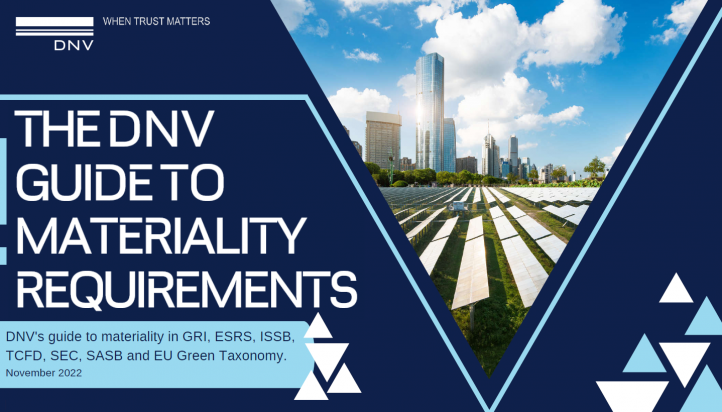Materiality is a core requirement of many current and emerging sustainability standards. DNV has produced a guide to the requirements in GRI, ESRS, TCFD, ISSB, SEC and SASB to support companies that are struggling to navigate the increasingly complex landscape.

Sustainability standards, reporting guidelines, and frameworks are comprehensive and established. There is now a great deal of guidance supporting companies in disclosing their E, S and G impacts, including the GRI, ESRS, TCFD, ISSB, SEC, and SASB. Considerable efforts have been made to standardise these requirements, yet each has different implications for materiality. To help, we have produced a guide to materiality requirements, summarising the key features and alignments between these reporting standards and initiatives.
DNV welcomes the new and updated sustainability requirements. It is now clearer how to account for environmental, social and governance issues against an organisation’s current and future activities. These developments have a high potential for impact, incorporating a greater realm of sustainability topics, and embedding sustainability risk assessment in companies’ internal controls, assessments, and management functions.
However, these standards are less defined when focusing on the materiality process. There is limited consistency across the standards reviewed in our guide, regarding the actual ‘steps’ and roadmap towards doing a materiality assessment. Our LinkedIn insights series will summarise some of the materiality gaps that remain.
If you’d like to understand how these developments affect your company, and how to get real value from your materiality approach, learning from our work with the likes of Nestle, Anglo-American, Holcim, BP and Unilever, please do get in touch with our team.
The report is provided for guidance only and shouldn’t be relied on when making decisions. As these standards are continually evolving, we will continue to update it from time to time, but this guide may not always be fully up to date. Users should make their own investigations when using these standards.
N.B. The information contained in this entry is provided by the above supplier, and does not necessarily reflect the views and opinions of the publisher


